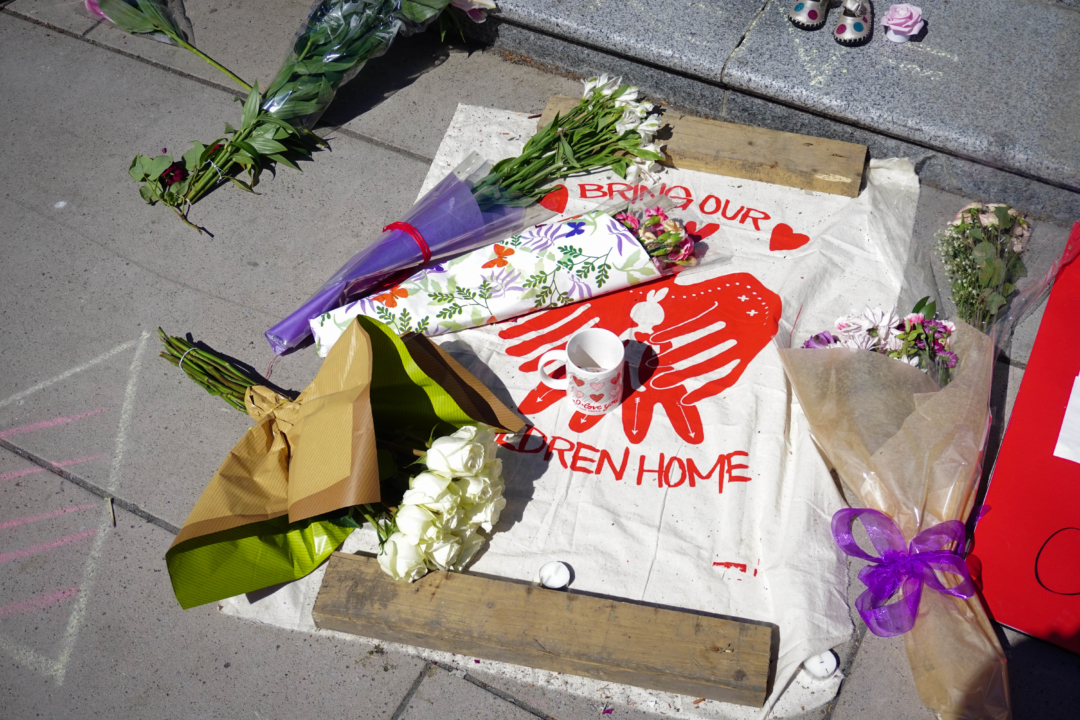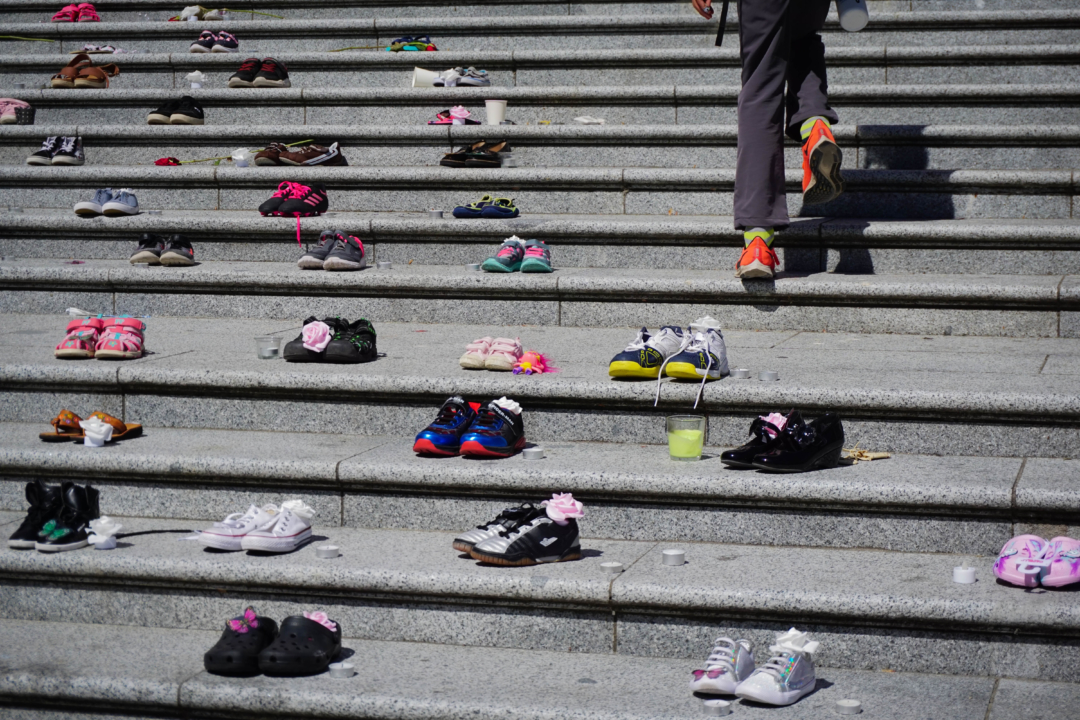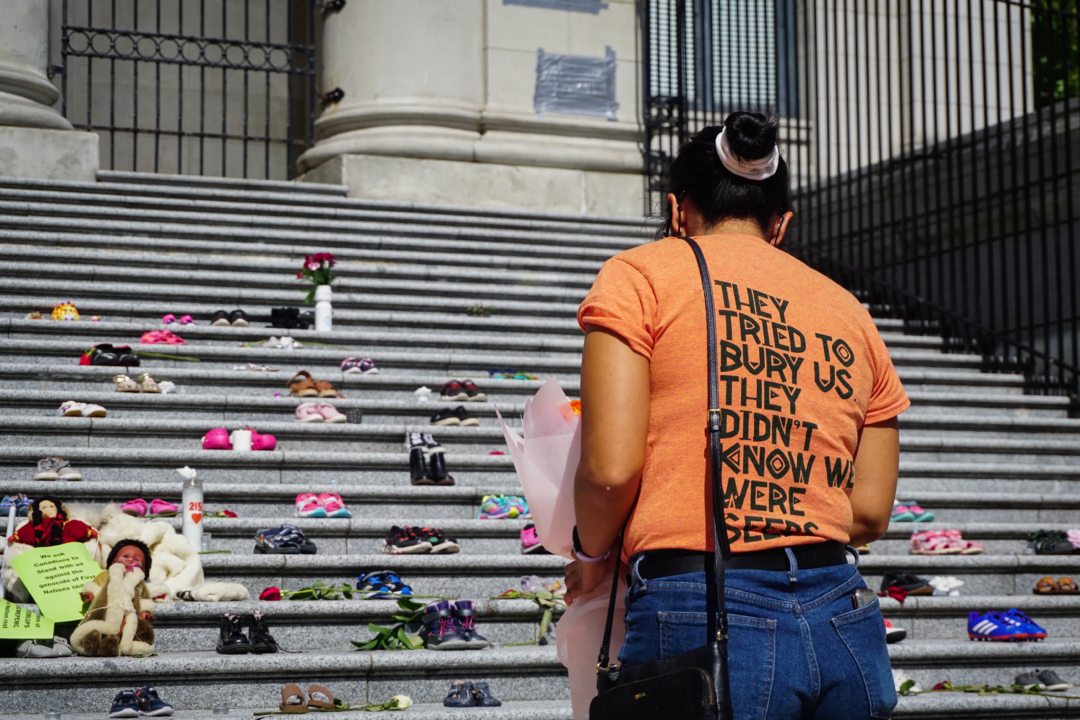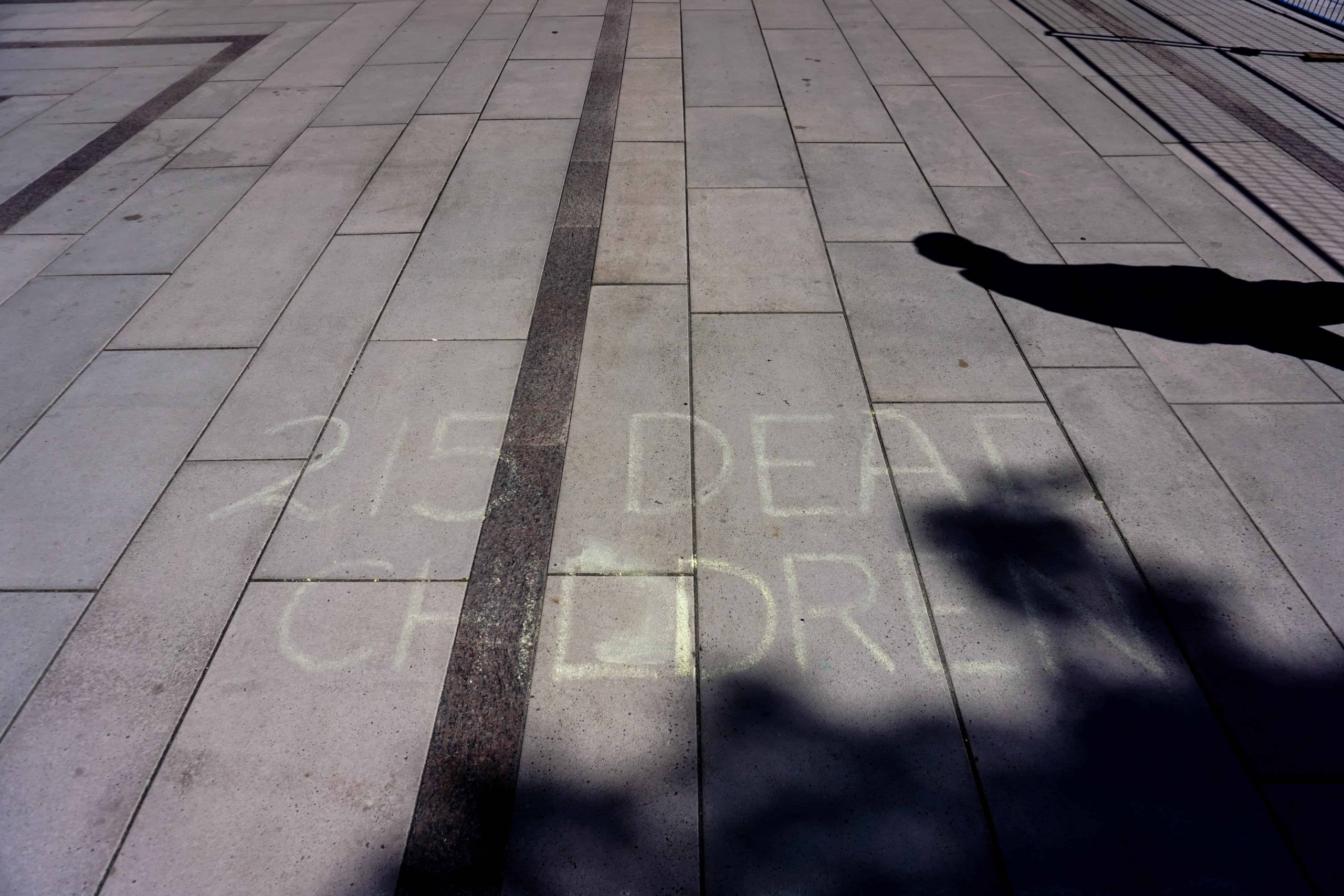Content warning: this article describes abuses committed as part of the residential school system.
On May 27, the Tk’emlúps te Secwépemc First Nation announced that ground-penetrating radar had confirmed the presence of 215 children’s remains in an unmarked grave at the site of the former Kamloops Indian Residential School in BC. Tk’emlúps te Secwépemc Kukpi7 Chief Rosanne Casimir told the CBC that some of the children in the grave were as young as three years old.
The Kamloops residential school, which was administered first by the Roman Catholic church and then by the federal government, operated from 1890 to 1978. It was the largest institution in the local residential school network, and it is estimated that up to 500 children from all over the province were registered there at any given time. These schools were designed to eliminate Indigenous culture, in a process that is considered by the Truth and Reconciliation Committee to be a form of genocide.
For years, Indigenous families have been saying that unmarked graves like this exist. Previously, the Truth and Reconciliation Commission had listed only 51 deaths on the Kamloops site from 1914 to 1963, but community survivors knew that many more children had gone missing. In 2009, the Truth and Reconciliation Commission requested $1.5 million to find them, and Stephen Harper’s federal government declined the request. Now, there are increasing calls to carry out a nationwide search for these unmarked graves.
Although the last residential school in Canada closed in 1996, Indigenous groups continue to face cultural erasure and intergenerational separation. There are currently triple the number of Indigenous children in registered foster care homes than the residential schools held at any one time — and Indigenous children make up 52 per cent of all children in foster care.
Haida artist Tamara Bell created an art installation outside the Vancouver Art Gallery to honour the 215 children. She told CTV that she hopes the memorial prompts people to understand the impact of residential schools, but she also wants it to serve as a means of healing.

215 pairs of shoes, each representing one child, lined the steps of the gallery. JADINE NGAN/THE VARSITY

A bouquet of flowers, a bright red sign, and children’s dolls were among the items that mourners left at the foot of the steps. JADINE NGAN/THE VARSITY

A rose, placed inside a pair of child’s moccasins, wilts in the heat. JADINE NGAN/THE VARSITY

A child, wearing an orange shirt to honour the children who died in Kamloops, holds hands with their family as they take in the memorial art installation. JADINE NGAN/THE VARSITY

“BRING OUR CHILDREN HOME,” reads a fabric banner held down by two pieces of wood, a mug, and four bouquets. JADINE NGAN/THE VARSITY

Two children stand in front of chalk words written on the stone tiles in front of the museum. JADINE NGAN/THE VARSITY

A child wearing orange shoes climbs the steps of the art gallery, careful not to disturb the memorial. JADINE NGAN/THE VARSITY

A woman in an orange shirt places a bouquet of flowers on the steps. JADINE NGAN/THE VARSITY
If you or someone you know is in distress because of the recent news about the Kamloops residential school, you can call the Indian Residential Schools Crisis Line at 1-866-925-4419 (available 24 hours a day).


